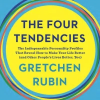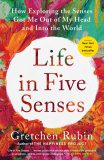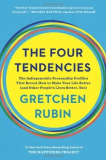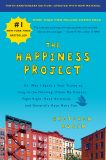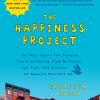On a recent trip to Texas, I finished Matt Klam’s novel Who Is Rich? This novel came out in 2017 and got a lot of buzz.
It’s about the once-famous cartoonist Rich who has stalled out in his career. Every summer, he teaches a week-long class at an arts conference in a beachside town. He’s married with two children, and has also been carrying on an affair for a year with Amy, another teacher at the conference. The novel focuses on what happens during the week of the arts conference when Rich and Amy are there together again.
I enjoyed the book very much, and I was especially interested to see the Four Tendencies in action. I’m always on the hunt for the Tendencies! This story involves two Obligers: Rich and Amy. Rich’s wife Robin may also be an Obliger, but we don’t see enough of her to judge. (Don’t know your Tendency? Take the quiz here.)
Rich is definitely an Obliger. He’s having Obliger thoughts and facing Obliger challenges; he shows Obliger strengths and weaknesses. He’s spinning out in major Obliger-rebellion.
I won’t give away everything that happens, but his Tendency shows most clearly in a few places.
For instance, he reflects, “People make you do things you don’t want to do.” Now of course, all Tendencies have to do things they don’t want to do; this is true for everyone. But it has particular bite for Obligers.
Rich’s wife Robin is always telling him they need more money; he doesn’t earn enough; they must scrimp and cut back. In an act of deep Obliger-rebellion, Rich buys Robin a $3,000 bracelet, a dollar amount that he knows will wipe out the checking account of their cash-strapped family. He thinks: “From this distance, Robin couldn’t do anything to stop me. I’d worked hard to earn these precious funds to buy a gift she didn’t want or need, to signify my love.”
Then, in further Obliger-rebellion, Rich doesn’t give the bracelet to his wife, but instead gives it to his lover Amy—who, by the way, is a multi-multi-millionaire. (For instance, to play in a softball game, she wears a pair of diamond earrings worth more than $220,000).
When Obligers enter a state of Obliger-rebellion, they often feel that they’re acting out of character. They’re puzzled by their own actions. As he buys the bracelet, Rich thinks, “I attempted to interpret my irrational action. Had I ever done this kind of thing before? No. A life in the arts requires vigilance and restraint. Was my behavior out of character? Yes, technically, and also terrifyingly, although it was possible that this was merely the culmination of a period of interior deadness and anger, that something had been building for months, or years, that the recent and ongoing stresses had pushed me over the edge.”
Obliger-rebellion is mysterious and important. It blows up a situation—which can be beneficial, absolutely, but can also be destructive.
Many people have emailed me with examples of the Four Tendencies they’ve spotted in books, TV, and movies. Keep them coming!

